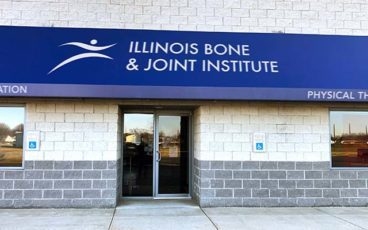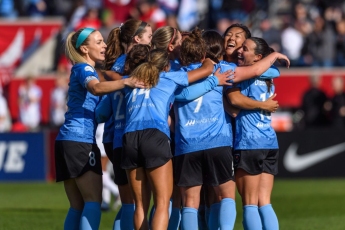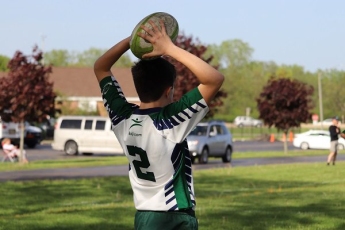Q&A with IBJI Sports Neurologist Anthony Savino, MD
What Is a Concussion?
Dr. Savino: A concussion is a functional injury of the brain caused by some sort of external force to the head or body. This means a concussed brain is not operating normally, but there is no apparent structural or anatomical abnormality to be seen on imaging such as CAT scan or MRI.
What Is the Difference Between a Head Injury and a Concussion?
Dr. Savino: An injury to the head is a superficial injury to the external structures of the skull and surrounding structures, while a concussion is an internal injury to the brain itself. Each instance of significant head impact or injury could possibly also cause concussion, however not every one does.
What Are the Dangers of an Undiagnosed Concussion?
Dr. Savino: In any instance of a significant head injury or concern for concussion, a period of close observation is reasonable and recommended. However, each situation is different and it depends on the presenting symptoms and clinical evaluation. Most sports-related head injuries and possible concussions do not pose a risk for more significant injury. The danger of a possible undiagnosed concussion or unrecognized possible concussion, which is supported by literature, is most commonly prolongation of concussion symptoms and recovery.
They’ve looked at athletes that have ultimately been diagnosed with concussion but continued to play beyond that point of injury, and whether or not they sustained another impact to the head after continuing to play, they tended to take longer to recover than athletes who were immediately removed from play. That doesn’t necessarily mean that subsequent head injuries will cause catastrophic injury, but much more commonly a prolongation of recovery and delayed return to sports.
What Are the Symptoms of a Concussion?
Dr. Savino: Because we believe concussion to cause dysfunction of the brain, to diagnose concussion we look for symptoms or signs that indicate that the brain is not functioning correctly. The most obvious and clear signs of concussion are loss of consciousness, amnesia or someone who is confused and unable to answer simple questions like where they are, what the date is, or what may have been happening in the game or situation prior to the injury. These signs are observed in a minority of cases. The more common symptoms are headache, dizziness, nausea, vomiting, light or noise sensitivity and sleepiness or difficulty sleeping. Students may have difficulty in school with normal cognitive functioning and adults may have difficulty at work.
What Tests Are Performed to Diagnose a Concussion?
Dr. Savino: The difficulty in head injury evaluation, concussion diagnosis and concussion management is that there is no one diagnostic tool or test to confirm or refute the diagnosis. Concussion is very much still a clinical diagnosis based on the mechanism of injury, objective signs, reported symptoms, and neurological examination. In the instance of a more significant injury to the head, or more concerning neurological signs or symptoms such as decreasing level of consciousness or awareness, one-sided numbness or weakness, seizure-like activity or repetitive vomiting, imaging such as a CAT scan would be indicated to evaluate for more significant injuries like bleeding. However, this doesn't assess for or diagnose concussion.
What Is the Treatment for Concussion?
Dr. Savino: Management of concussion, just like evaluation of possible concussion, is clinical and symptom based. Concussions can present differently in different people and they can present differently among people who have sustained more than one. For athletes, with any concern for concussion they should be immediately removed from play and not return until they have been evaluated and cleared by a medical professional. We treat initial symptoms conservatively and focus on relative rest of the brain within the first one to two days after injury and then gradually return the patient back to their normal activities while helping them to manage symptoms such as headache, light or noise sensitivity, difficulty with school or work, etc.
Initial management of headache would be focused on lifestyle factors, including proper hydration, a regular and healthy diet, good sleep practices, headache trigger recognition and management, and rest when needed. We do utilize over-the-counter medication and it is okay to treat post-concussion or post-traumatic headaches with the goal of relieving pain in addition to getting these patients back to their normal routine as soon as possible.
What Is Baseline Concussion Testing and How Does It Help?
Dr. Savino: Baseline concussion testing is a general term that encompasses any pre-season or pre-sports evaluation for athletes with the hopes of collecting information that would better allow the provider to assess a head injury or possible concussion. Being that concussion evaluation is clinical, and with most of the cases not involving those more clear signs of concussion (like loss of consciousness, amnesia or confusion), we are dealing with subjective symptoms, so the more information we have about the patient's brain prior to injury, the better we are able to assess if that injury actually involves the brain. The pre-season evaluation helps to best manage the individual athlete. For example, if I have an athlete who has a history of headaches prior to injury, I might treat them a little more aggressively off the bat versus someone who is not prone to headaches.
Are There Any Other Screenings or Tests for Concussion?
Dr. Savino: The most commonly and widely used concussion baseline test has been ImPACT testing, which is a computerized neurocognitive screen that can provide information regarding things like memory, reaction time and impulse control. It can be a useful tool to use in the evaluation of a possible concussion, however, as previously discussed, assessing for possible concussion is still clinically based.
Another commonly used tool, utilized most often by athletic trainers in the evaluation of a possible concussion on the field, is called the SCAT5 or the Sport Concussion Assessment Tool. It includes several different tests within it including mental status, immediate and delayed memory, balance and a brief neurological examination in addition to a symptom checklist. Again, having an understanding of the athlete prior to the injury can be very helpful when using this test.
When Can an Athlete Return to Sports Following a Concussion?
Dr. Savino: There is no absolute time that an athlete must be held out of their sport or that we would consider that all athletes need to take to be fully recovered. Like with concussion evaluation, return to sport is a clinical decision and based largely on symptom recovery in addition to having a normal neurological evaluation and normalization of any baseline testing that had been completed prior to the injury.
After symptoms have resolved, all athletes are put through what is called the return-to-play process. This is a series of physical exertion steps or challenges with increasing intensity and sport-specific activities to ensure they tolerate safe activity before returning to full play, which may pose an increased risk of subsequent head impact. Any return of symptoms may indicate the brain is still recovering and the athlete is not ready to advance to the next step.
What Is Post-Concussion Syndrome?
Dr. Savino: Post-concussion syndrome is a catch-all term that describes concussion-like symptoms that last for longer than we would anticipate in any given situation. In general, when recovering from concussion we expect a gradual improvement of symptoms over time and ultimate resolution, so if symptoms continue on beyond an expected recovery time and/or do not gradually recover as expected, then we tend to use the term post-concussion syndrome. Another important factor is that this tends to be a perpetuation of a multitude of symptoms that had been associated with the concussion, not just one issue or symptom that takes a bit longer to recover.
What Sports Put You at Greatest Risk for a Concussion?
Dr. Savino: The most commonly identified sports with risk for concussion include football, hockey, lacrosse, wrestling and soccer. However, any contact or collision sport poses a risk of head injury or possible concussion, including those not often thought about including volleyball cheerleading and gymnastics, and other sports like field hockey. I will also say that leisure activities we don’t think about and aren’t highlighted are also risky, and in fact may involve more significant injury including skull fracture and intracranial bleeding, including bike riding, skateboarding and scooter use. This is at least in part due to the fact that helmets are not very popular.
For Athletes, What Is the Best Way to Prevent a Concussion?
Dr. Savino: Unfortunately there is no way to absolutely prevent concussions in sports. However, we have significantly improved rules and regulations in order to make them safer. For example, we have decreased the amount of hitting time during football practices and increased the age at which soccer players start heading the ball and hockey players start checking. There have also been changes in the way the games are taught, including a focus on safer football tackling techniques that can reduce the injuries to the head.
Does a Head Injury Equal a Brain Injury?
Dr. Savino: I would certainly say that not all head injuries or head impacts, even those resulting in symptoms, indicate that there's been an injury to the brain. The most important piece is clarifying the diagnosis as soon as possible and coming up with a clear management plan based on that diagnosis.
Who Are Your Patients and When Are They Referred to You?
Dr. Savino: The majority of my patients are youth athletes coming in for head injury evaluations with the rest being adults with head injuries or general neurology patients. My youth athletes are typically referred by their athletic trainers, school nurses, pediatricians, or other parents.
Has the Management of Concussion Care Changed Over Time?
Dr. Savino: Management of concussion has significantly changed within the last several years in that we have moved away from complete or recommended rest for an extended period of time and now focus on active recovery. If needed, a brief period of rest based on symptoms may be appropriate, and then as quickly as is tolerated we are getting students and athletes back to school and activity to avoid any negative effects the removal of those things will cause.
Can You Describe ‘Brain Rest’?
Dr. Savino: Unfortunately you can’t stop your brain from working. The current recommendations and what we’ve seen to be successful is a period of relative rest and adjustments of normal activities to best help and manage symptoms within the first 24-48 hours after a possible concussion, which may involve staying home from school and avoiding activities that increase symptoms, like prolonged screen use or physical activity. However, this is guided by the severity of symptoms that the patient is experiencing and not all students or athletes require this period of complete rest. That’s why it’s also important to be evaluated by someone who understands the injury (as quickly as possible) so they can come up with the best individualized management plan.
Get the Specialized Care You Need
Concussions should be evaluated by a specialist who is trained to diagnose and manage disorders of the brain. The IBJI Sports Neurology team provides comprehensive concussion management, from complimentary ImPact baseline testing to post-injury evaluation, diagnosis, treatment, rehab, and return-to-play clearance. Learn more about our IBJI concussion specialists.




